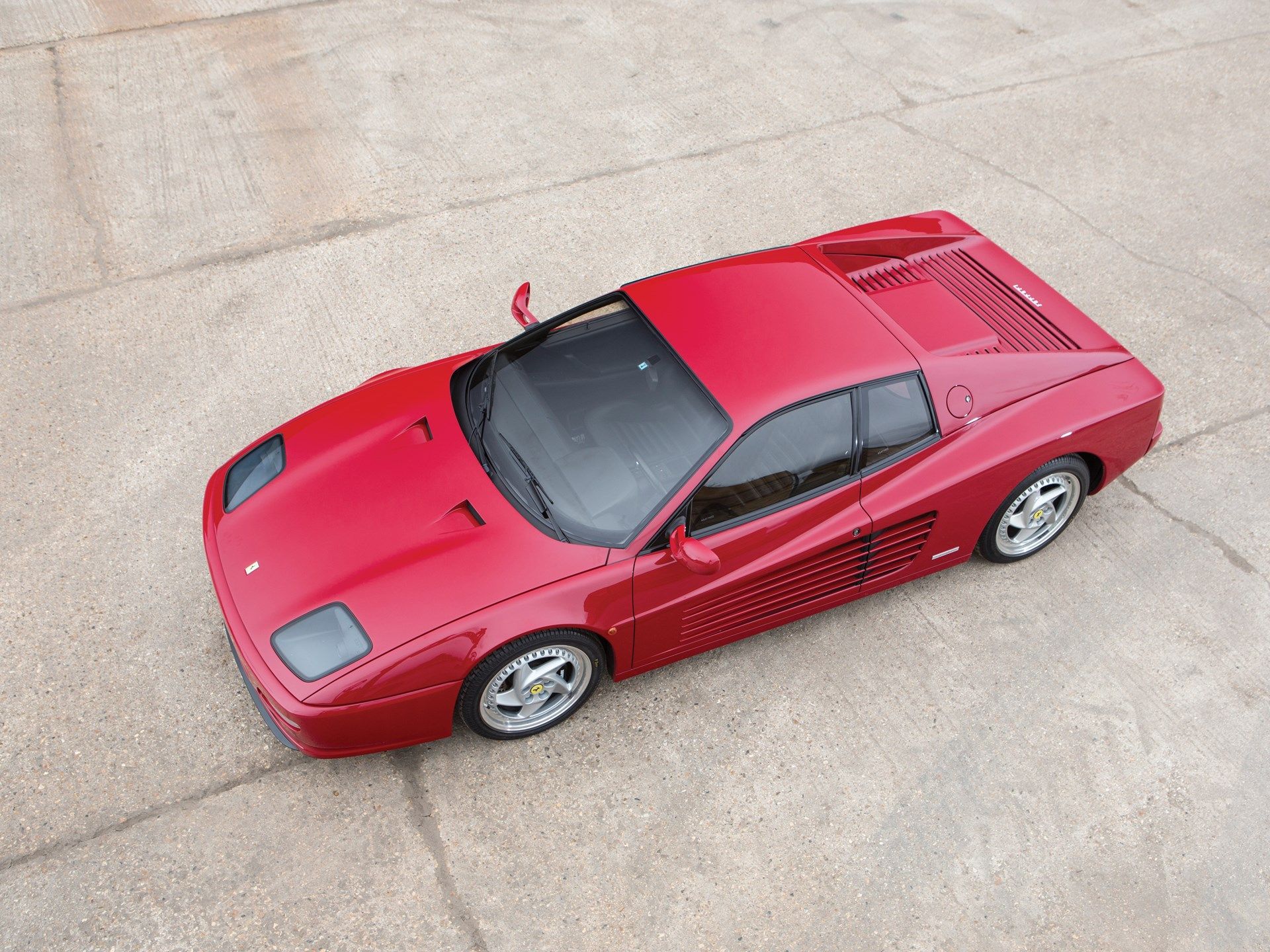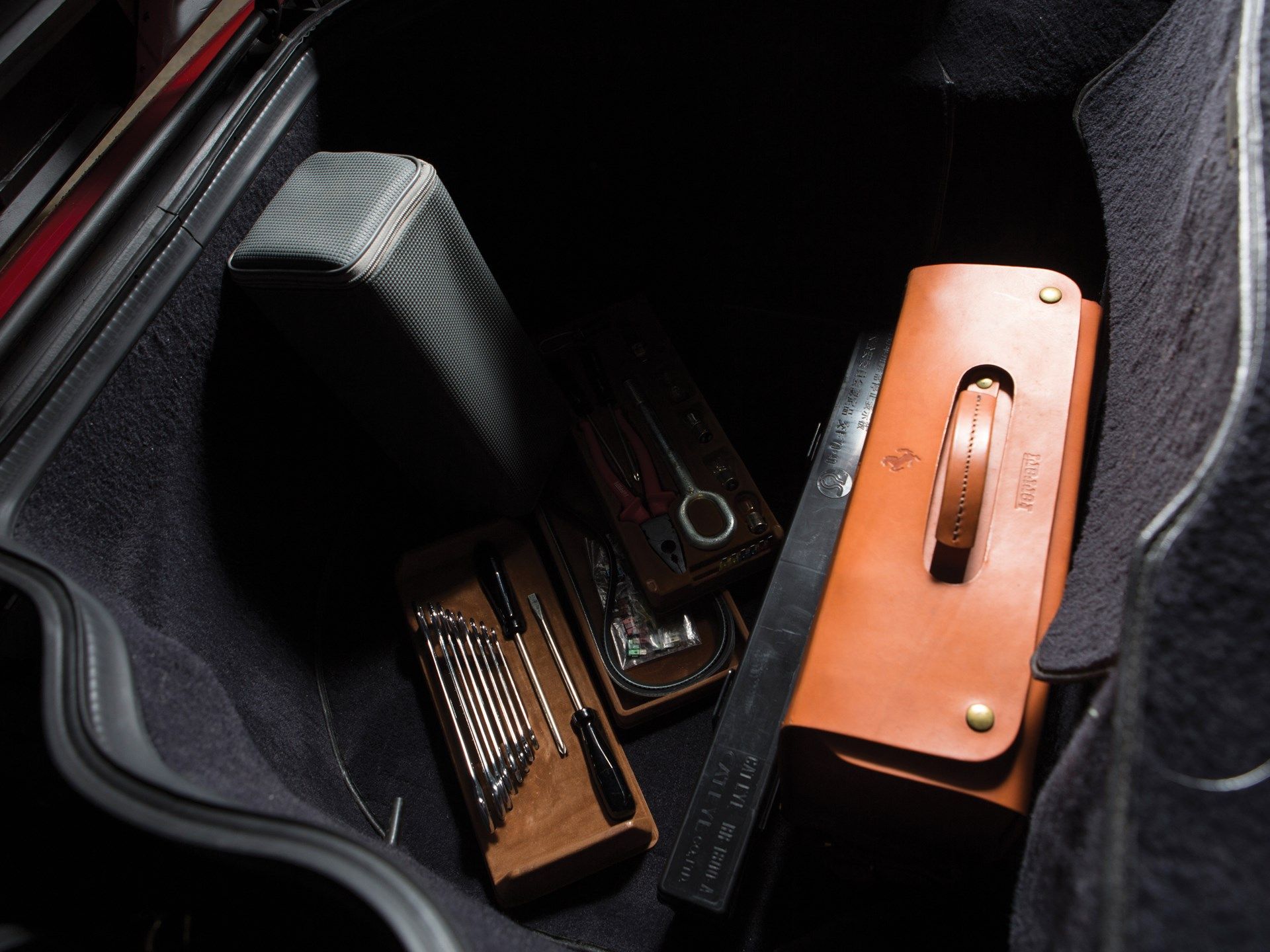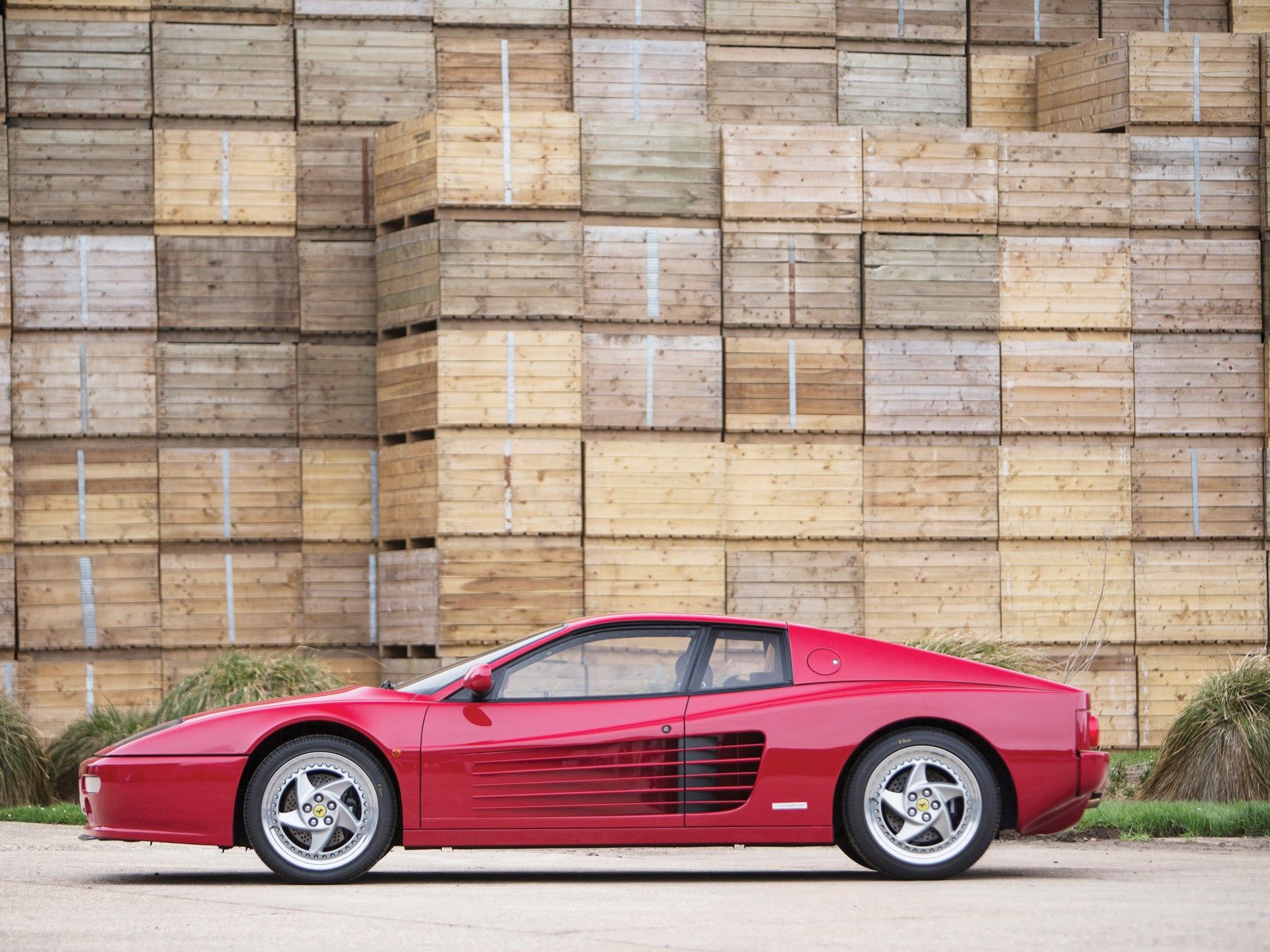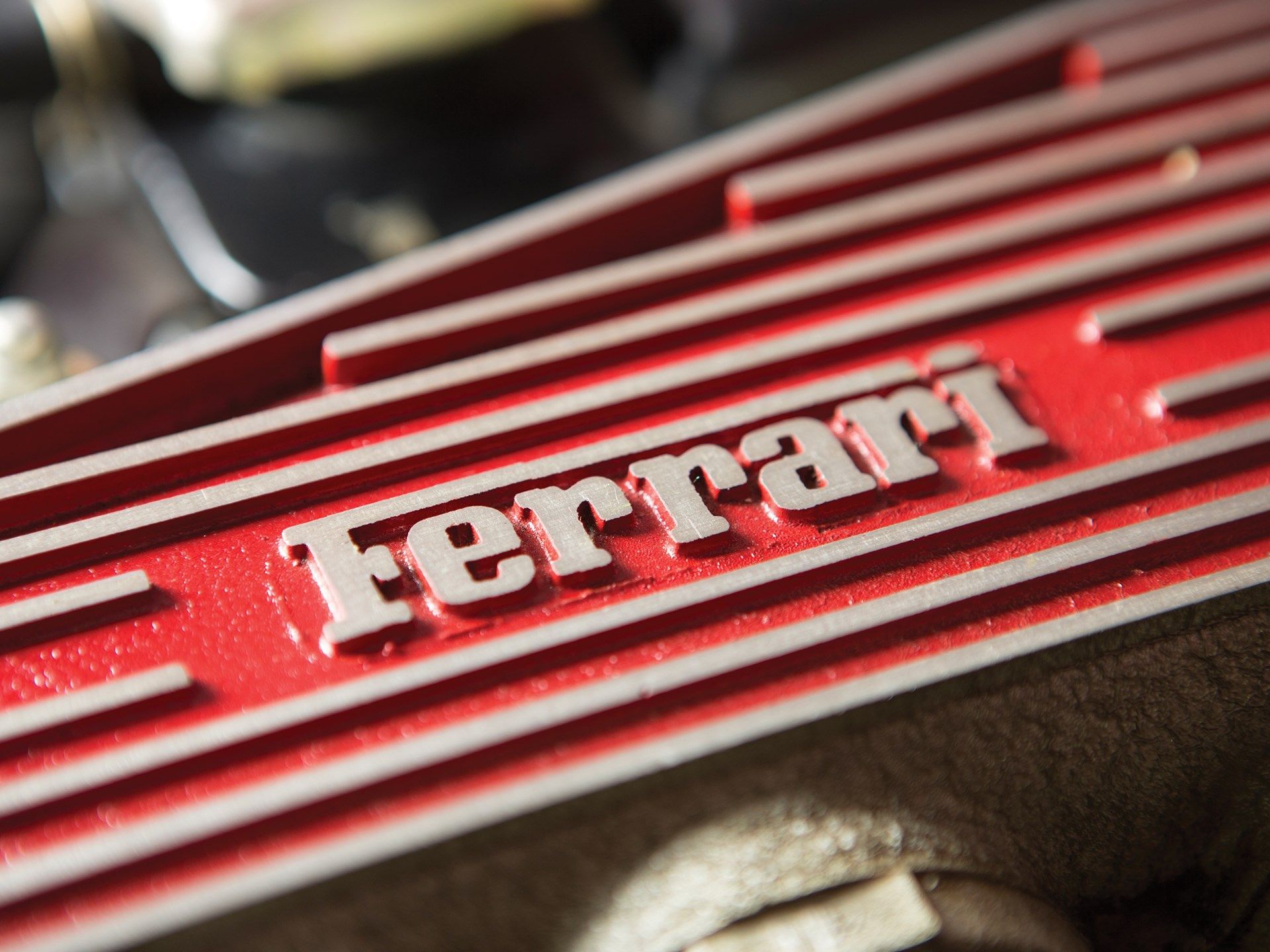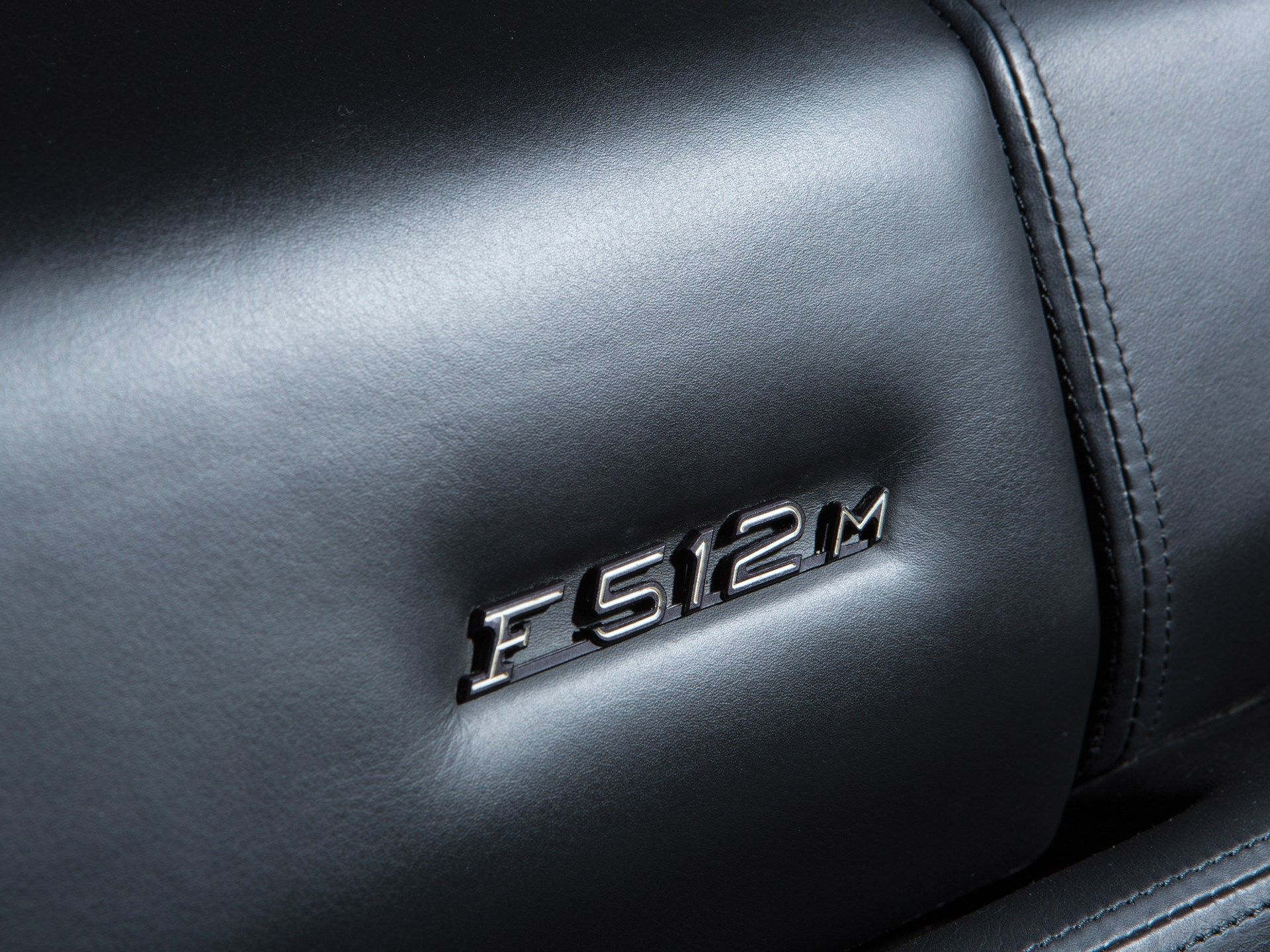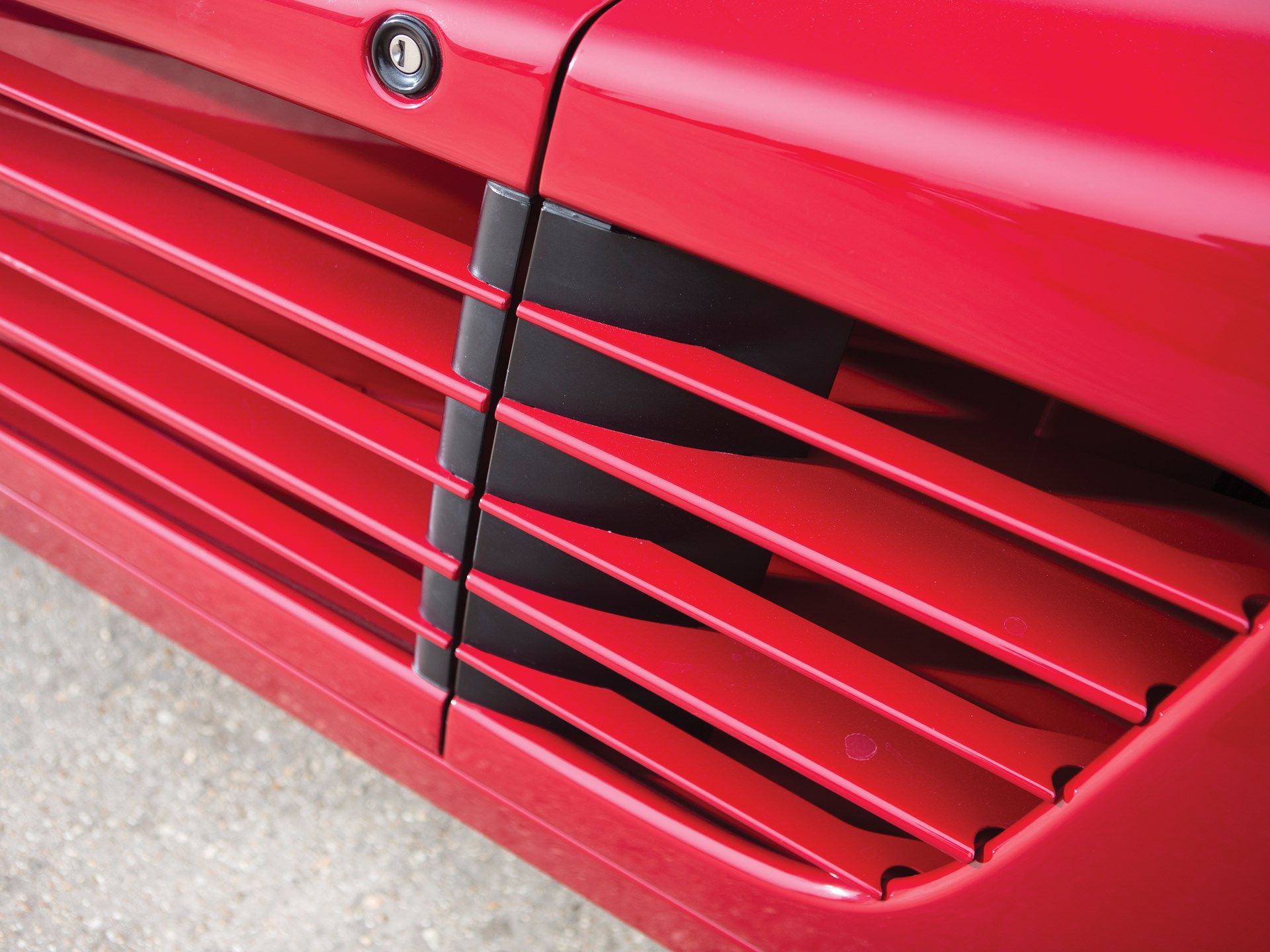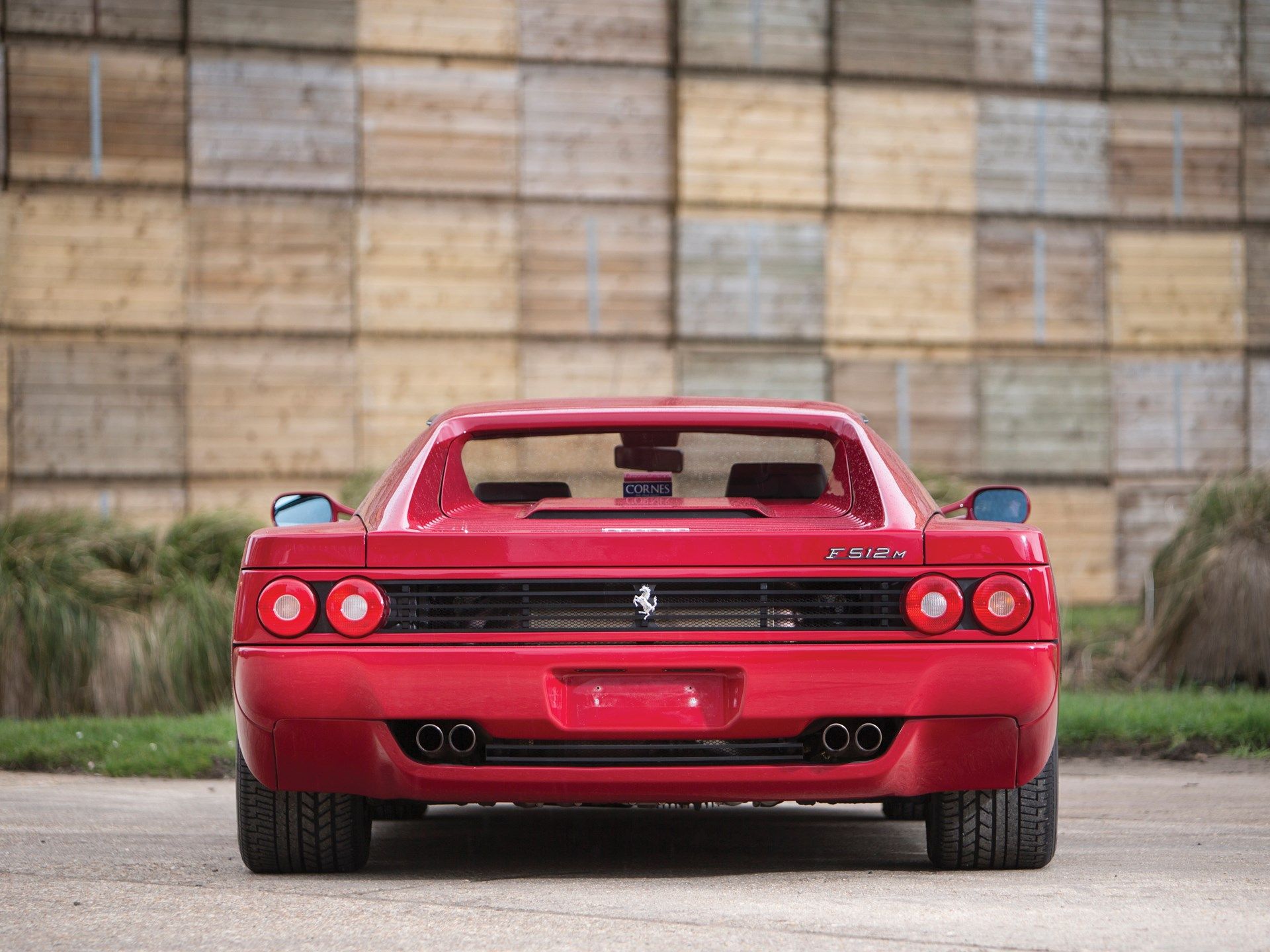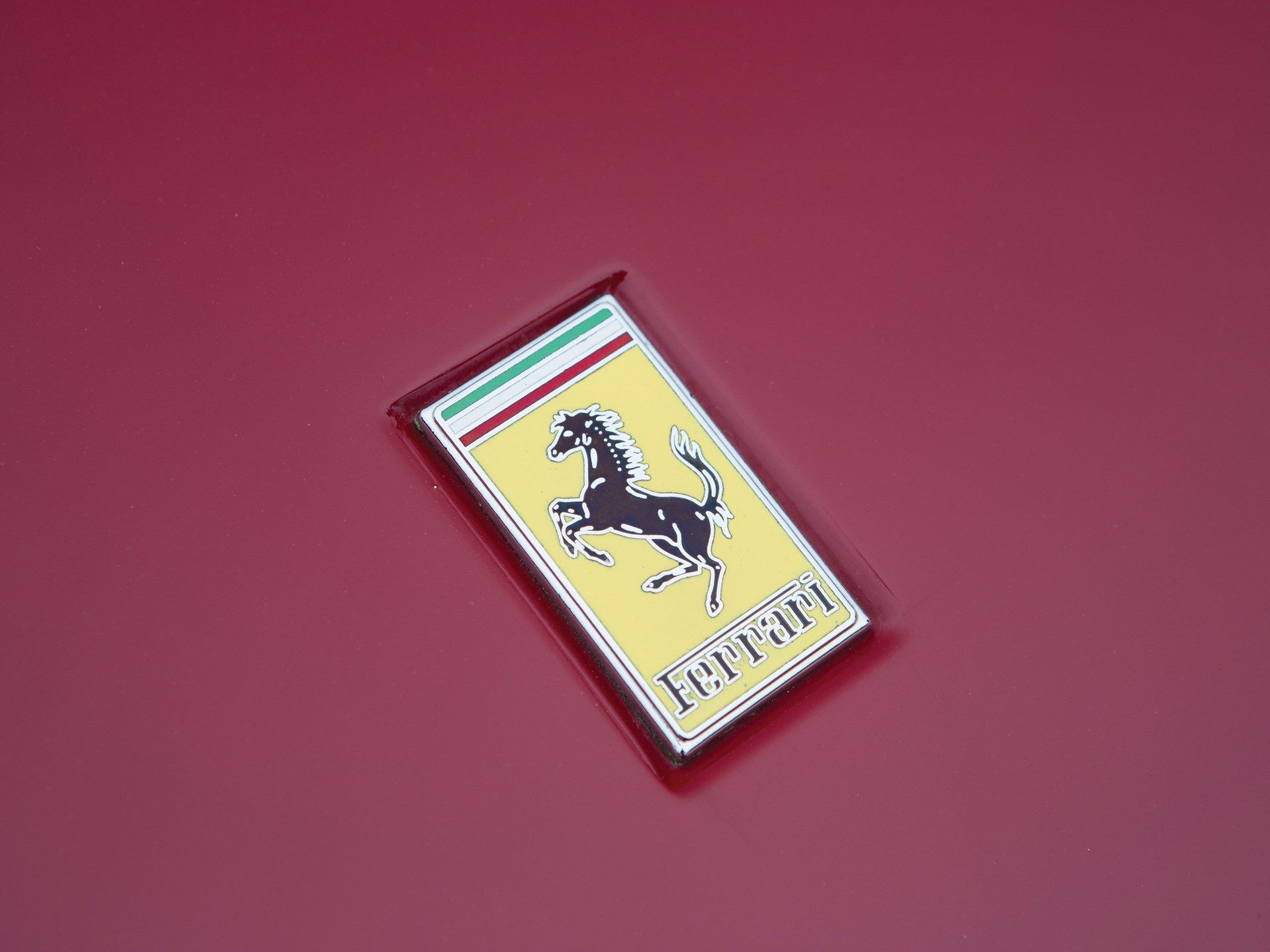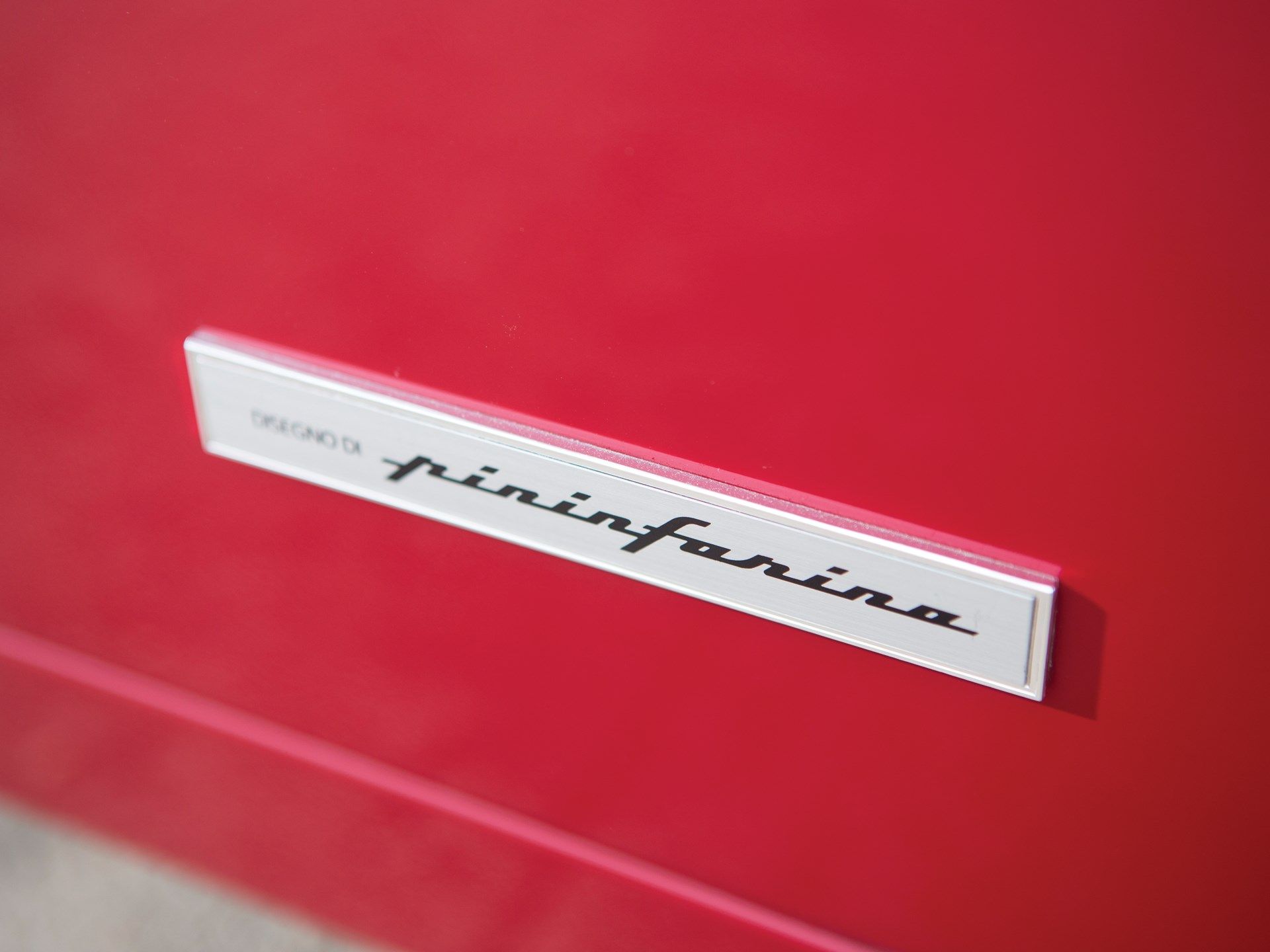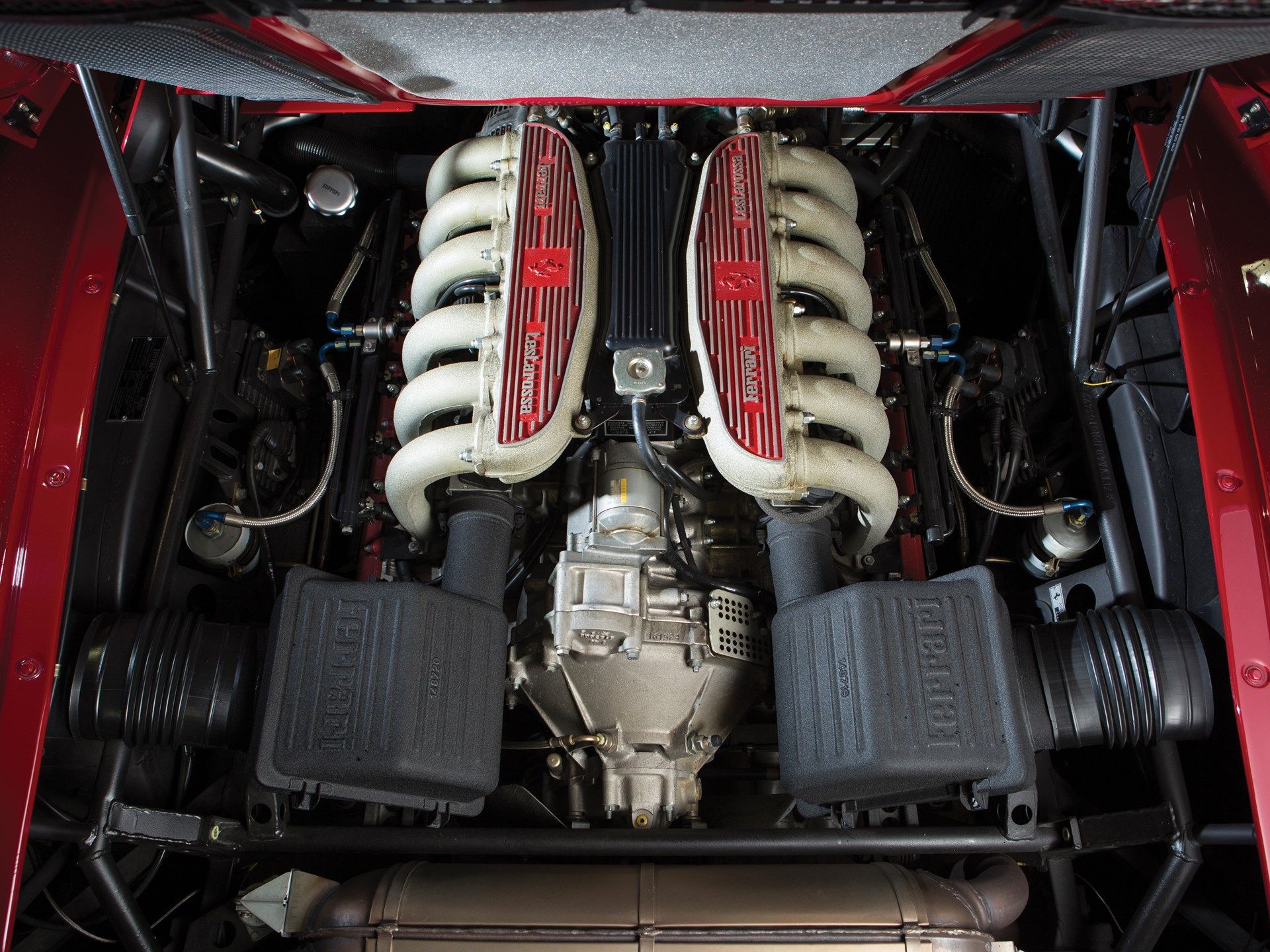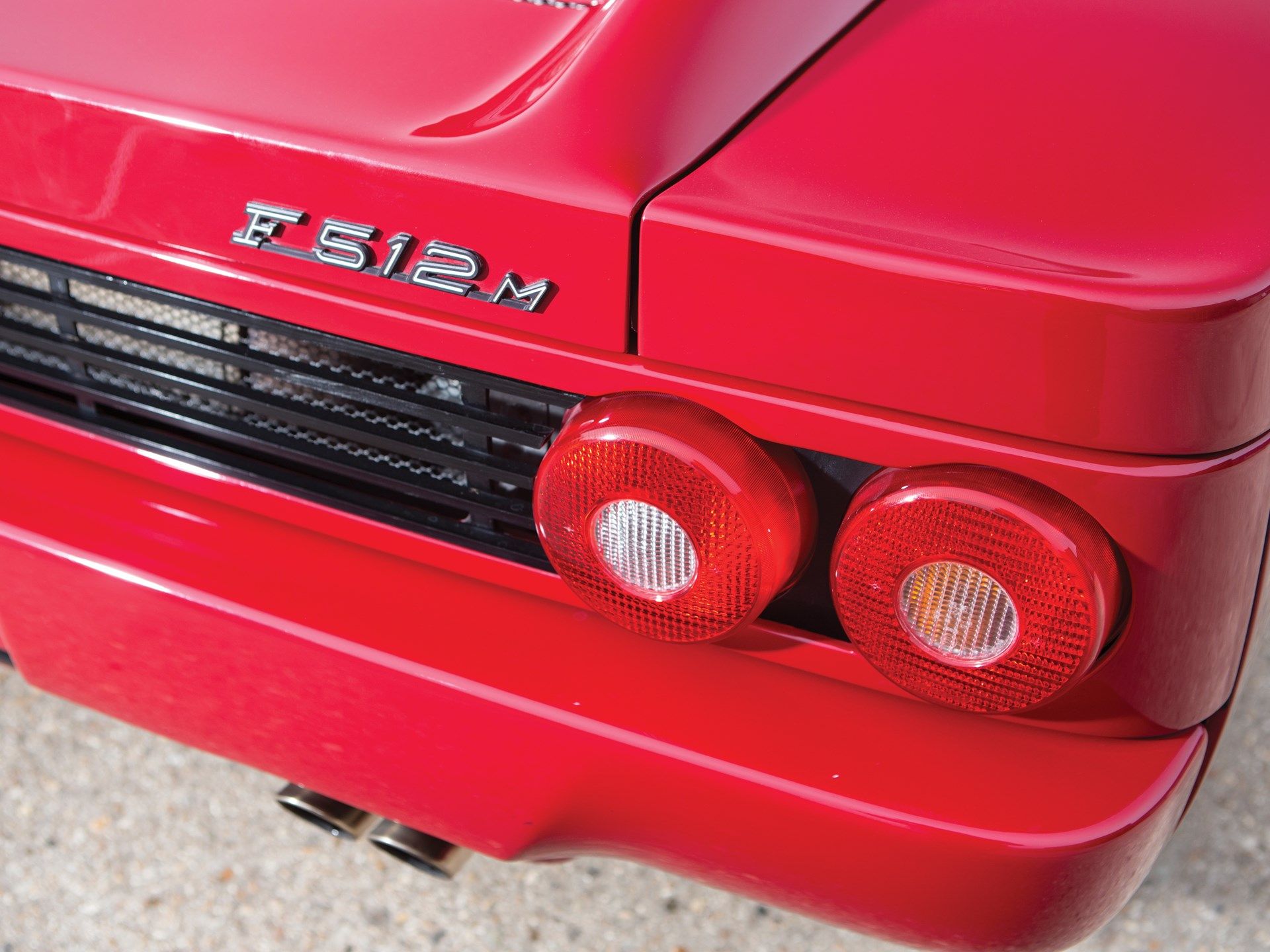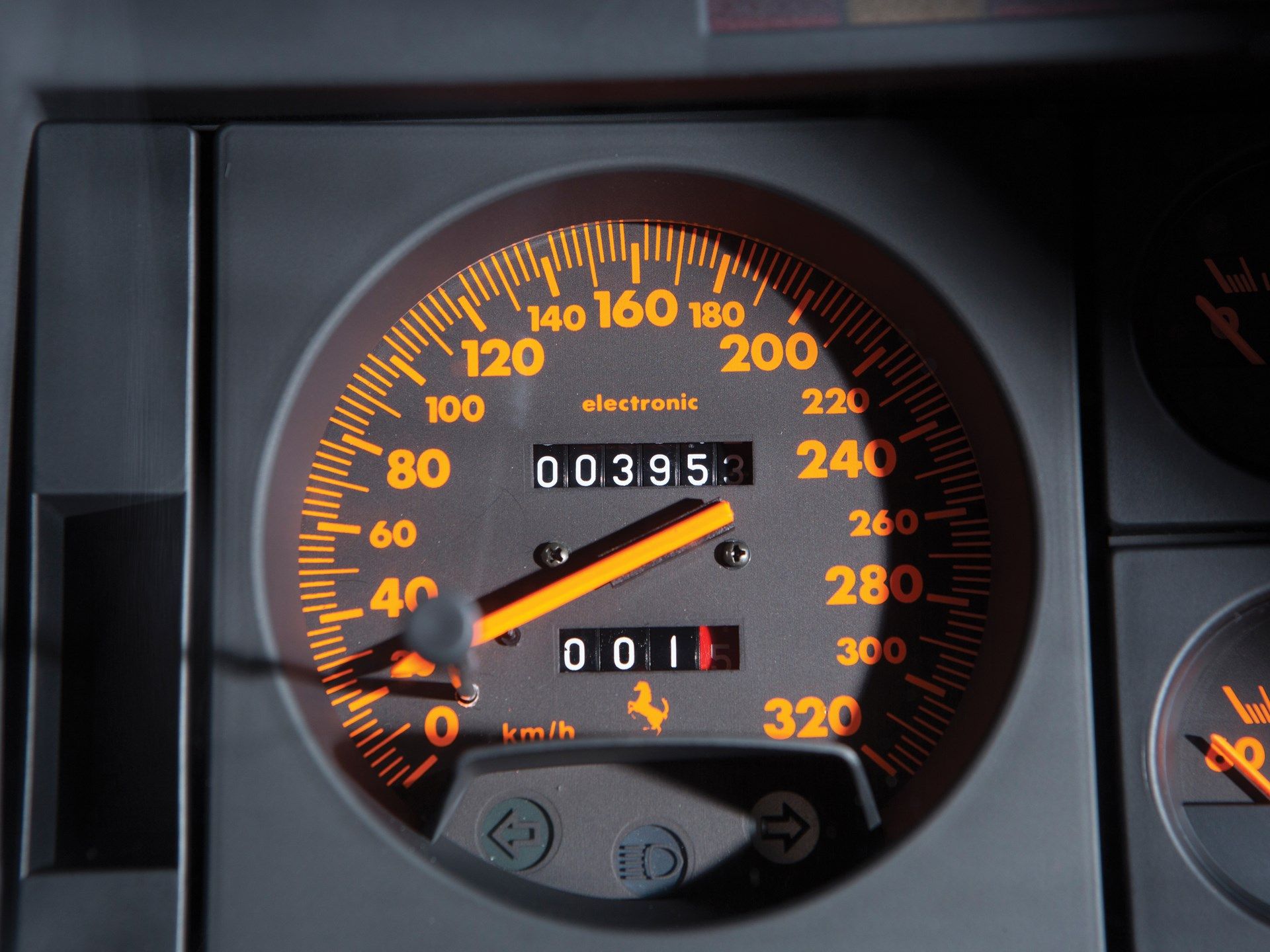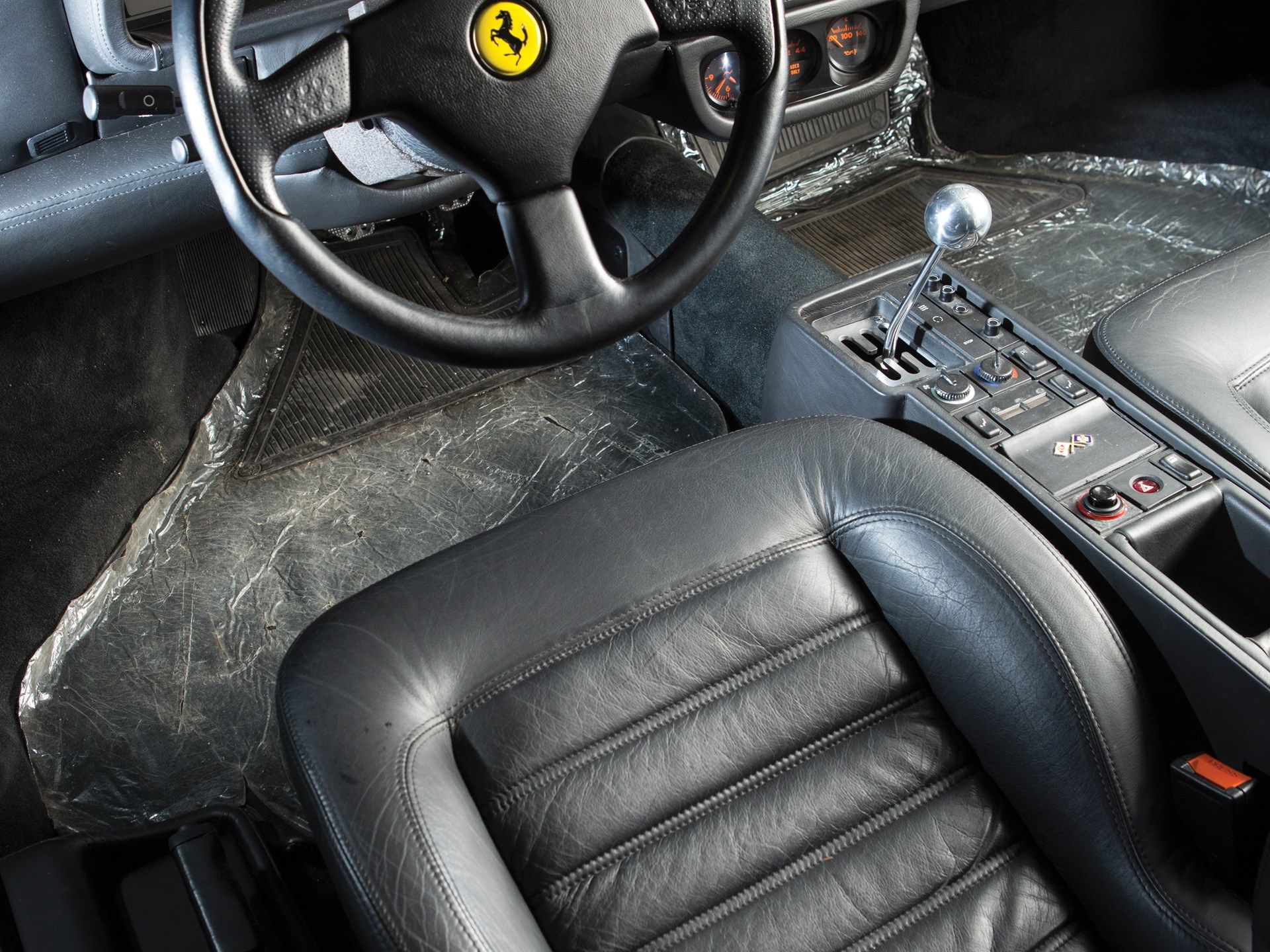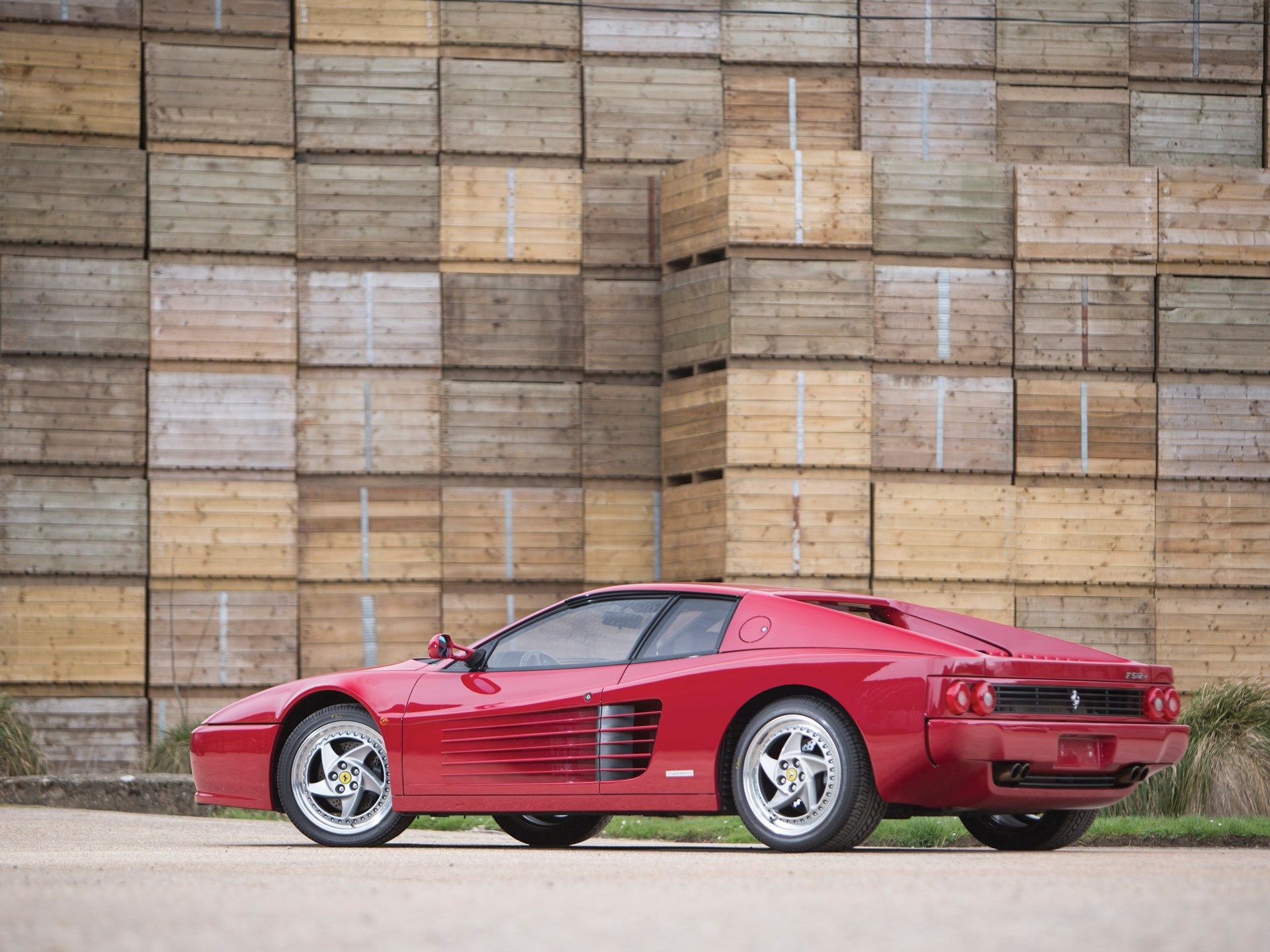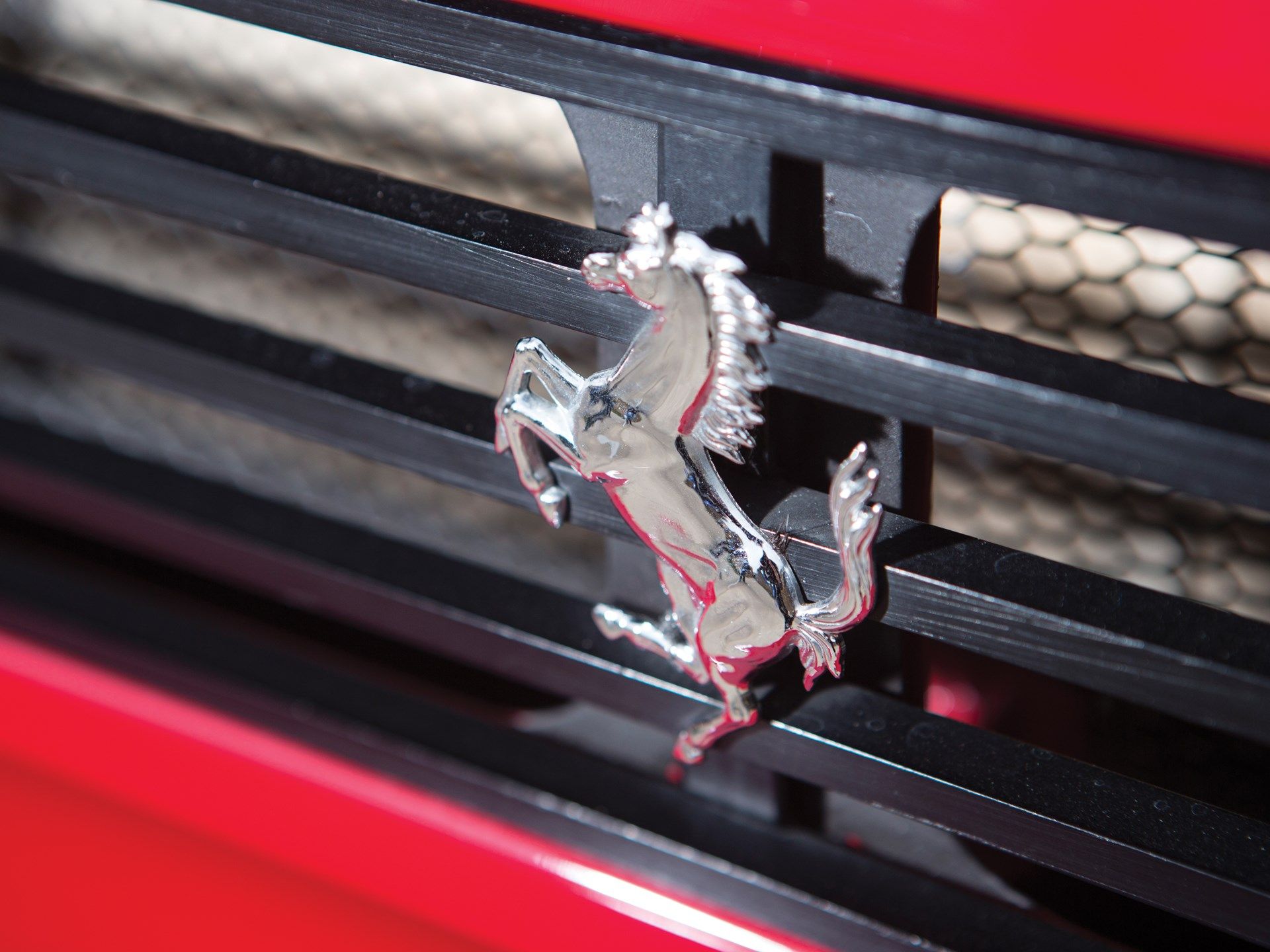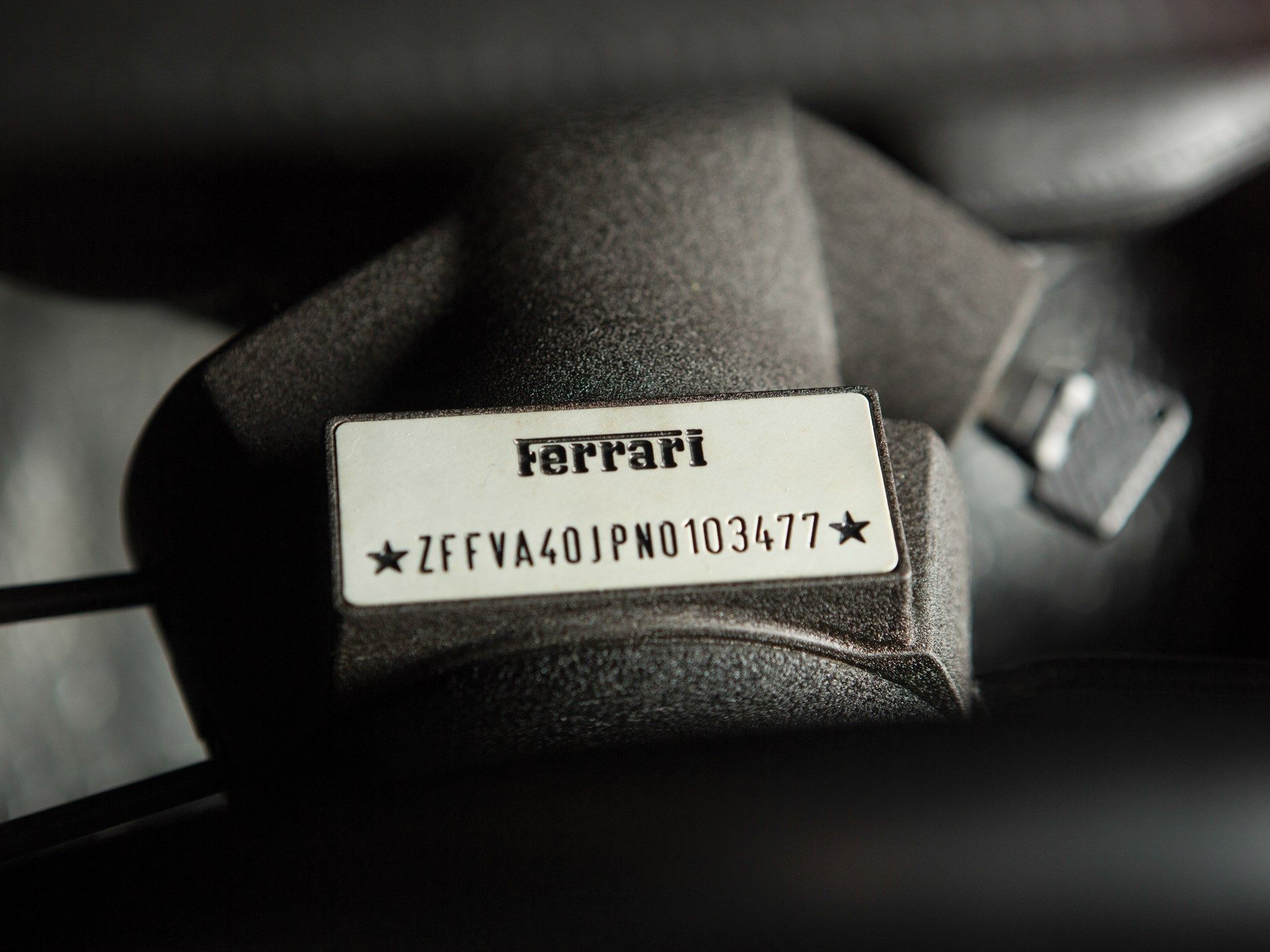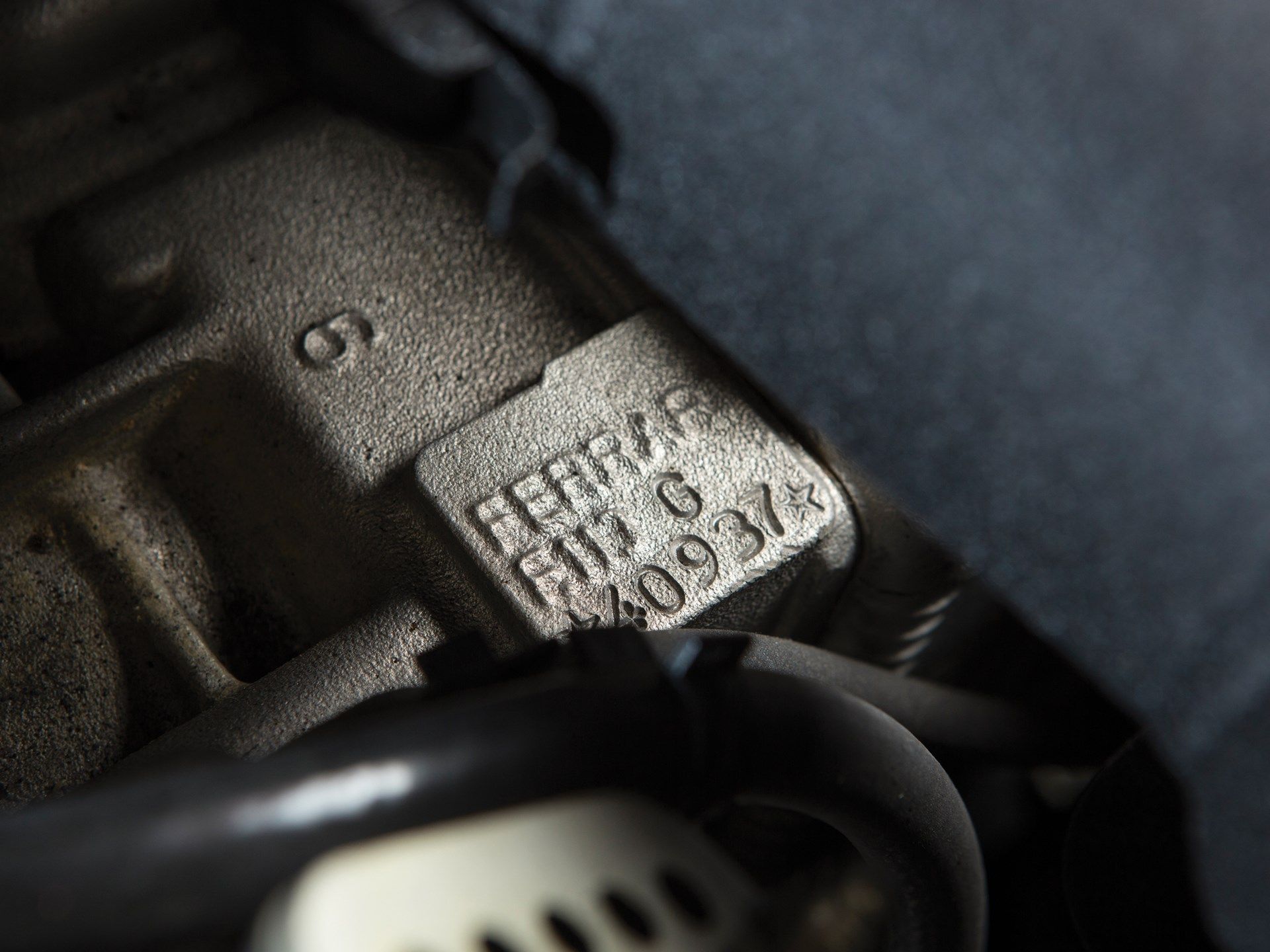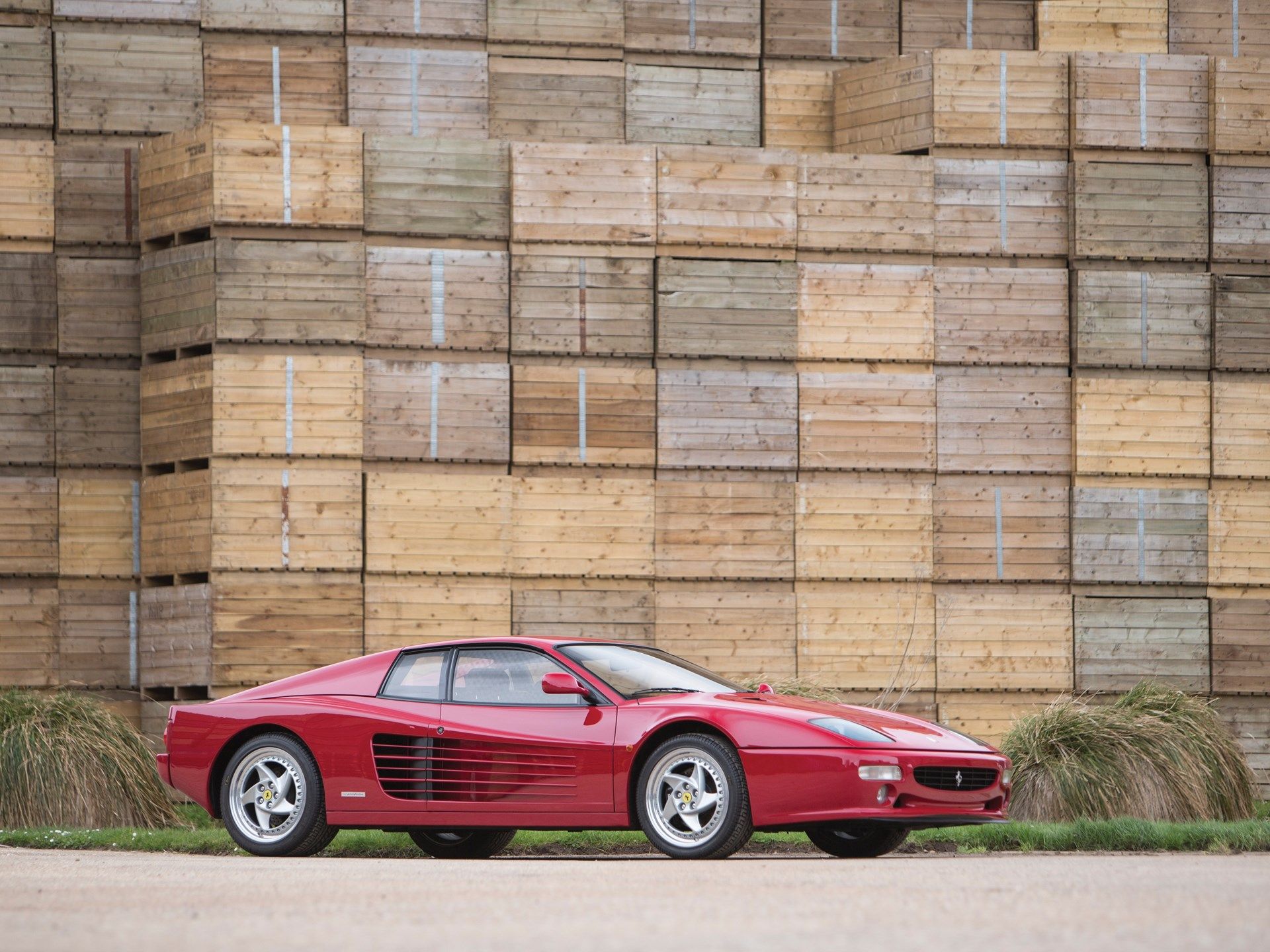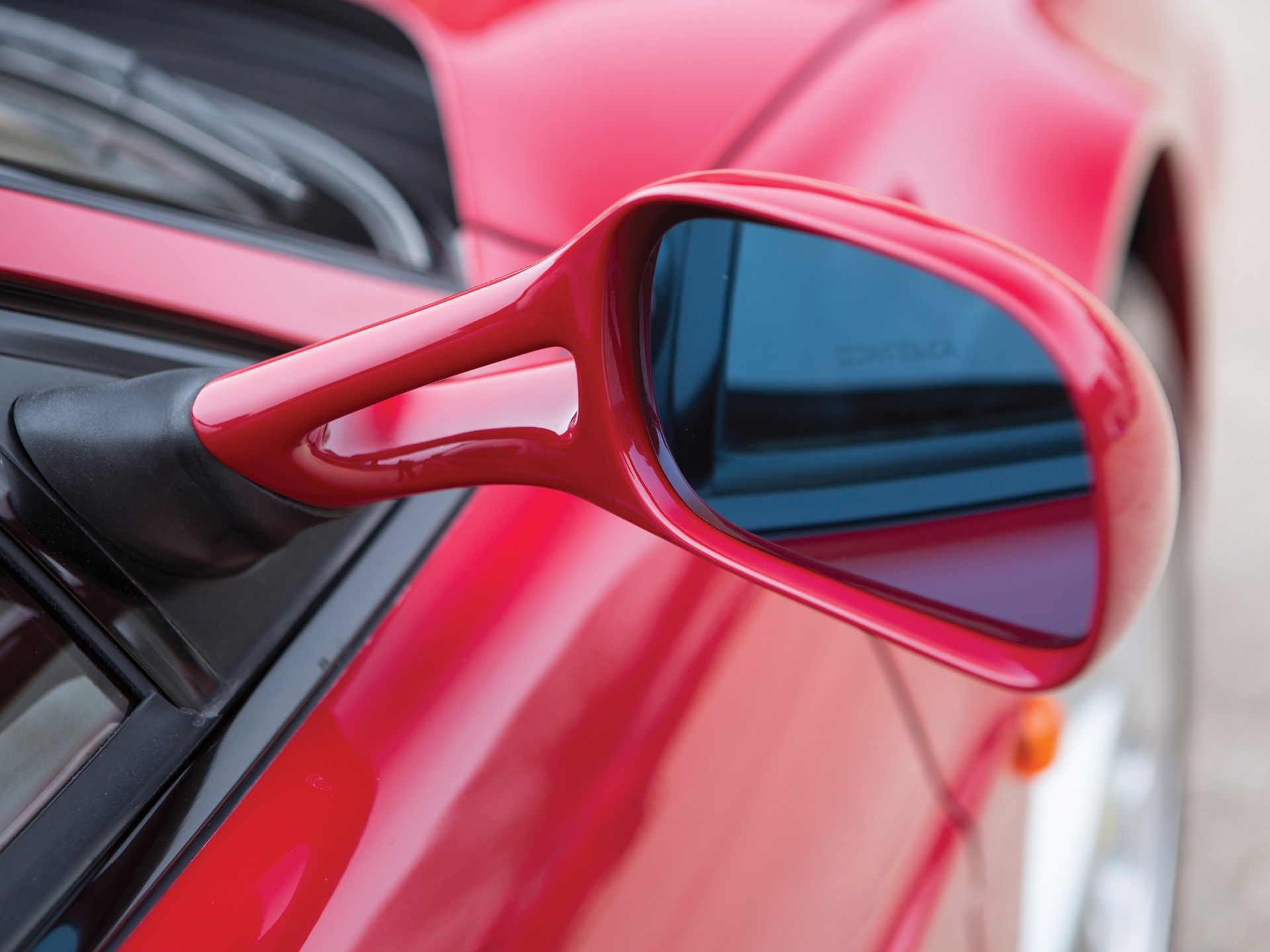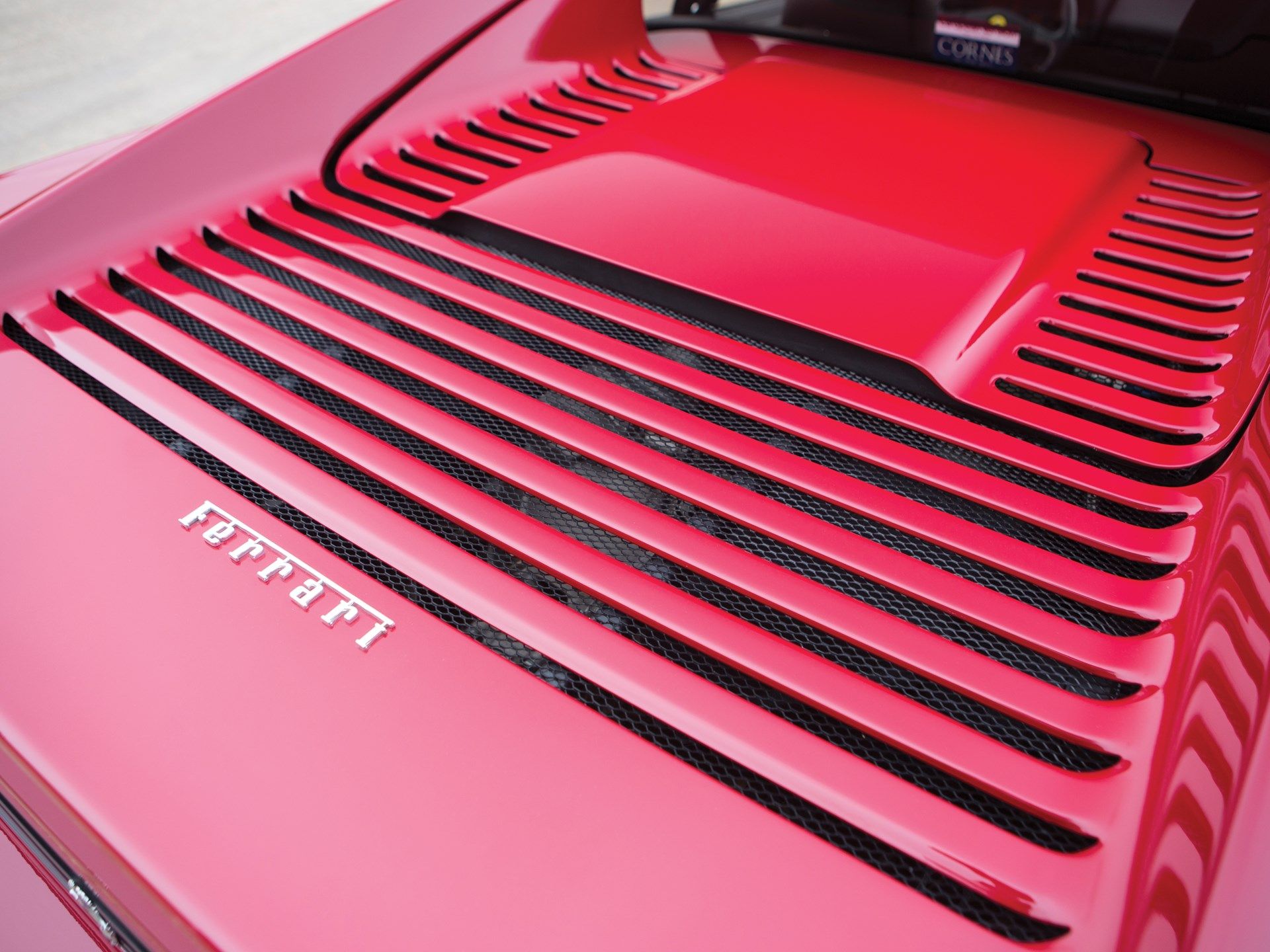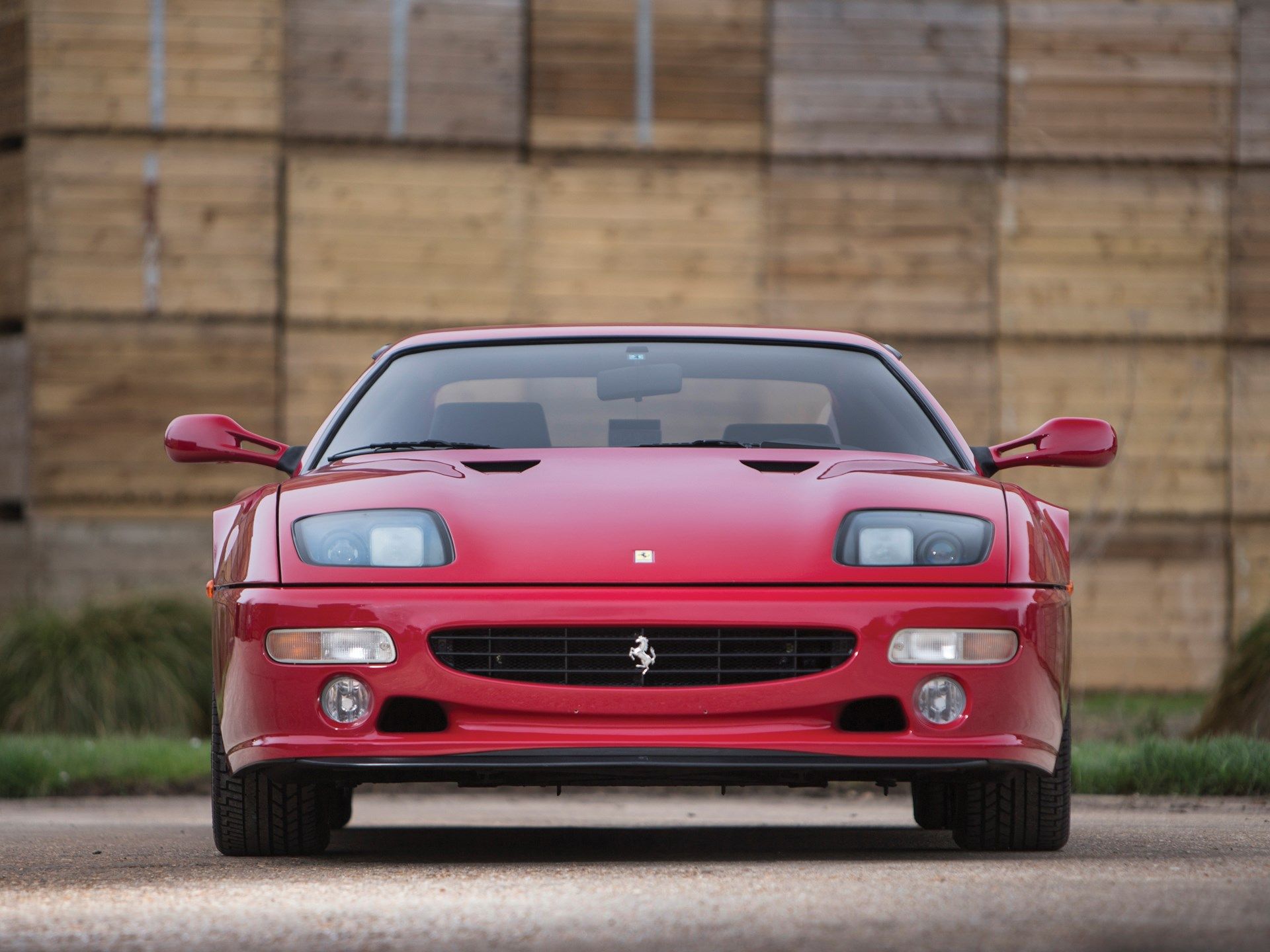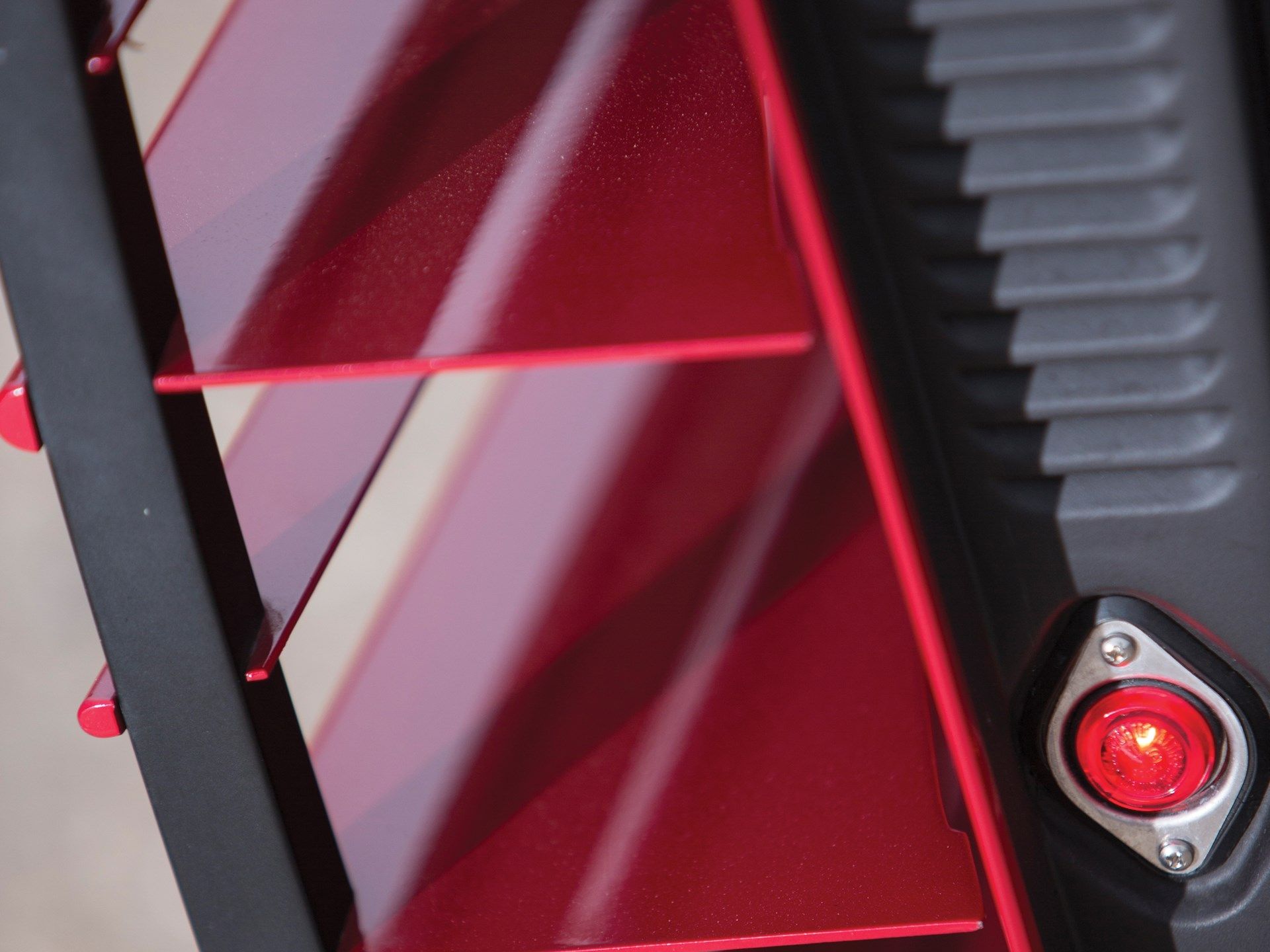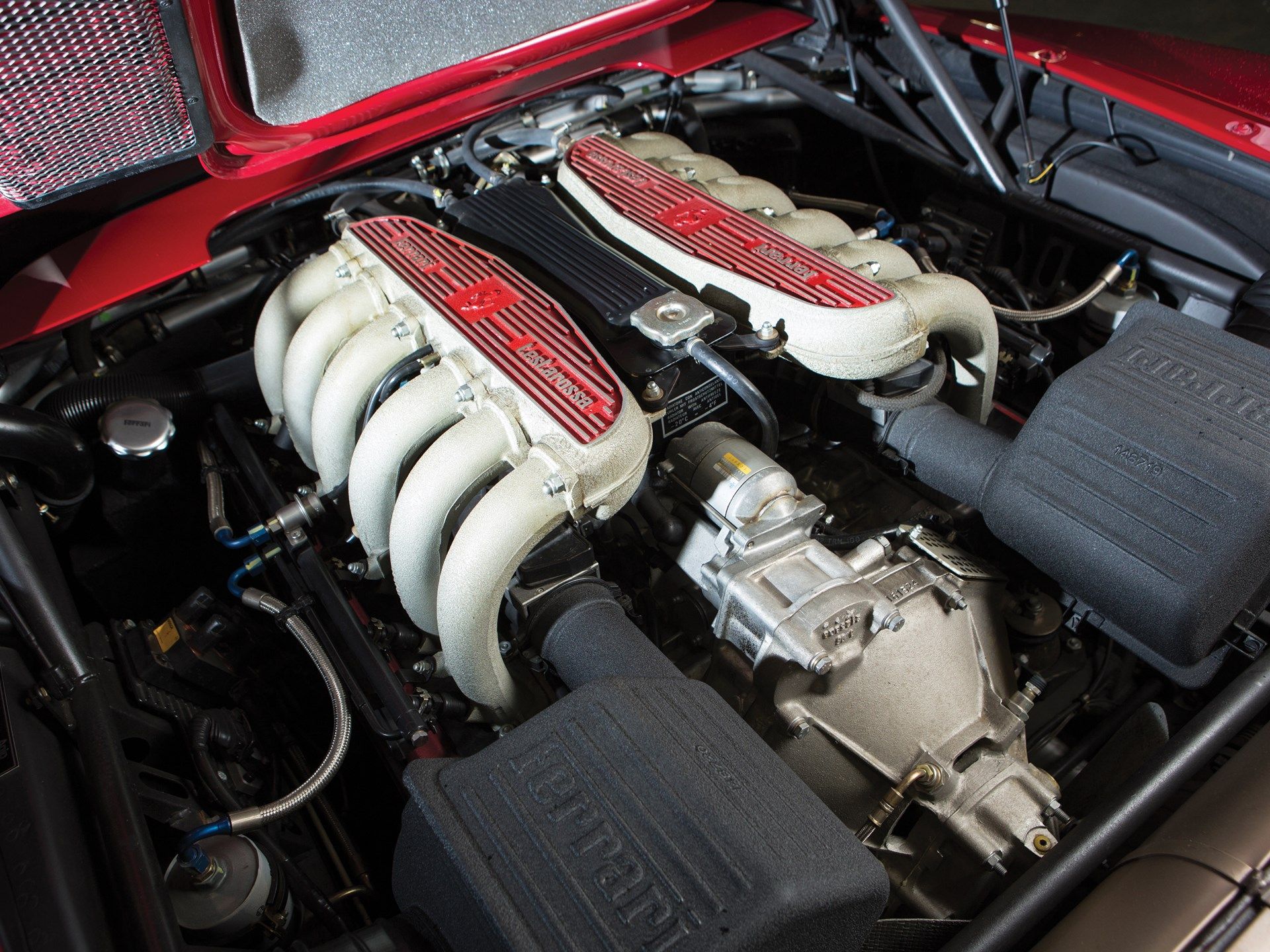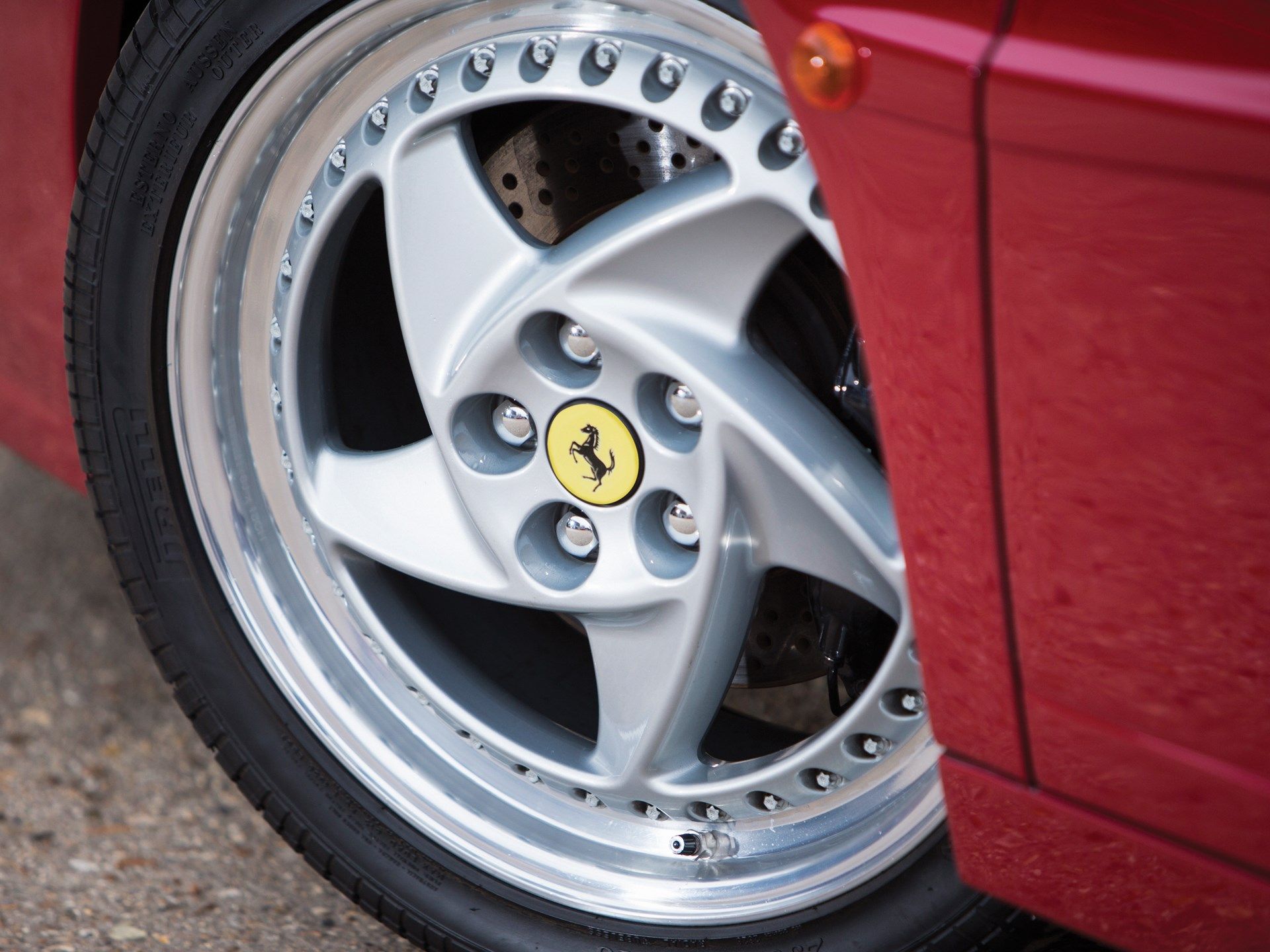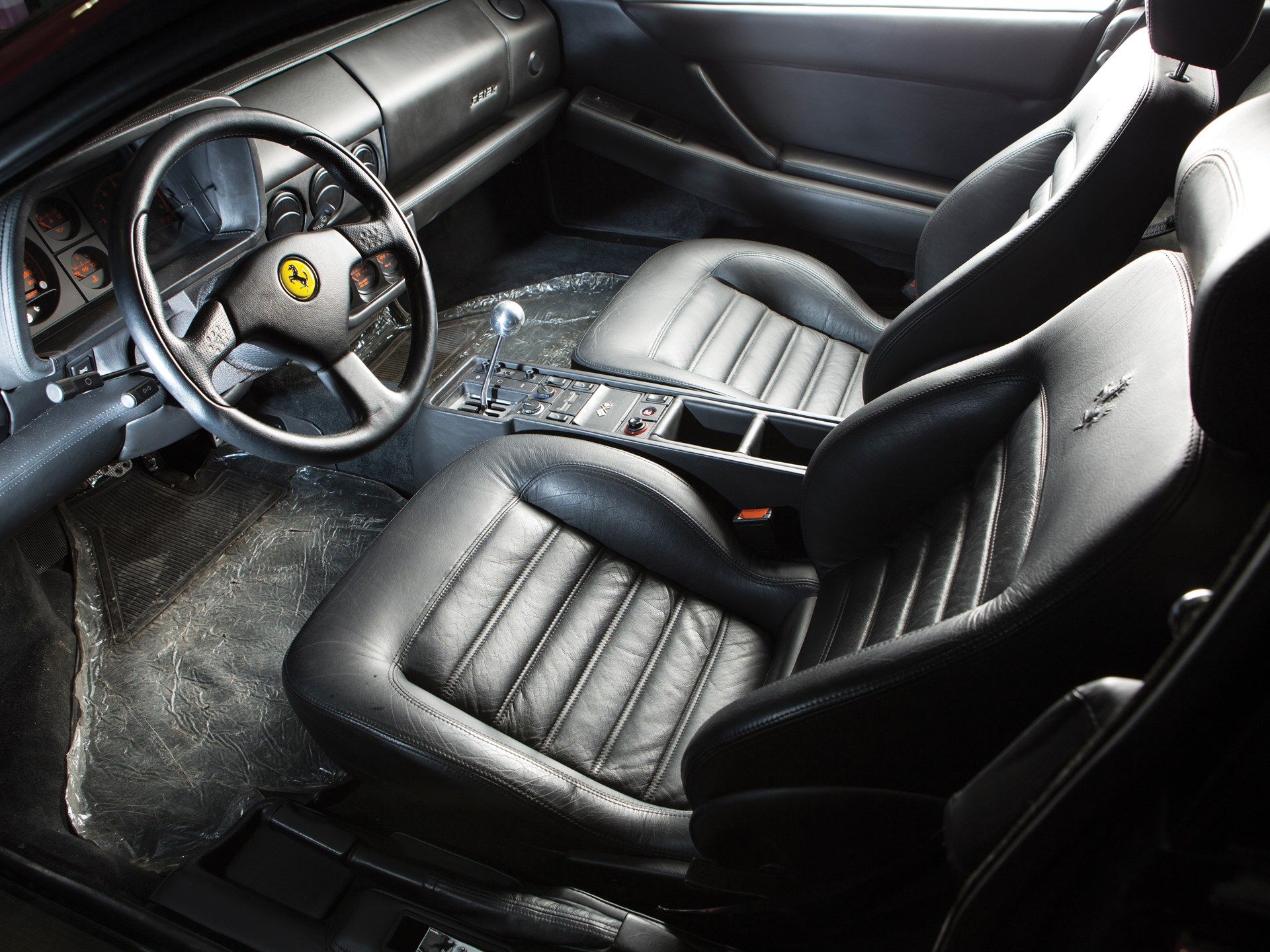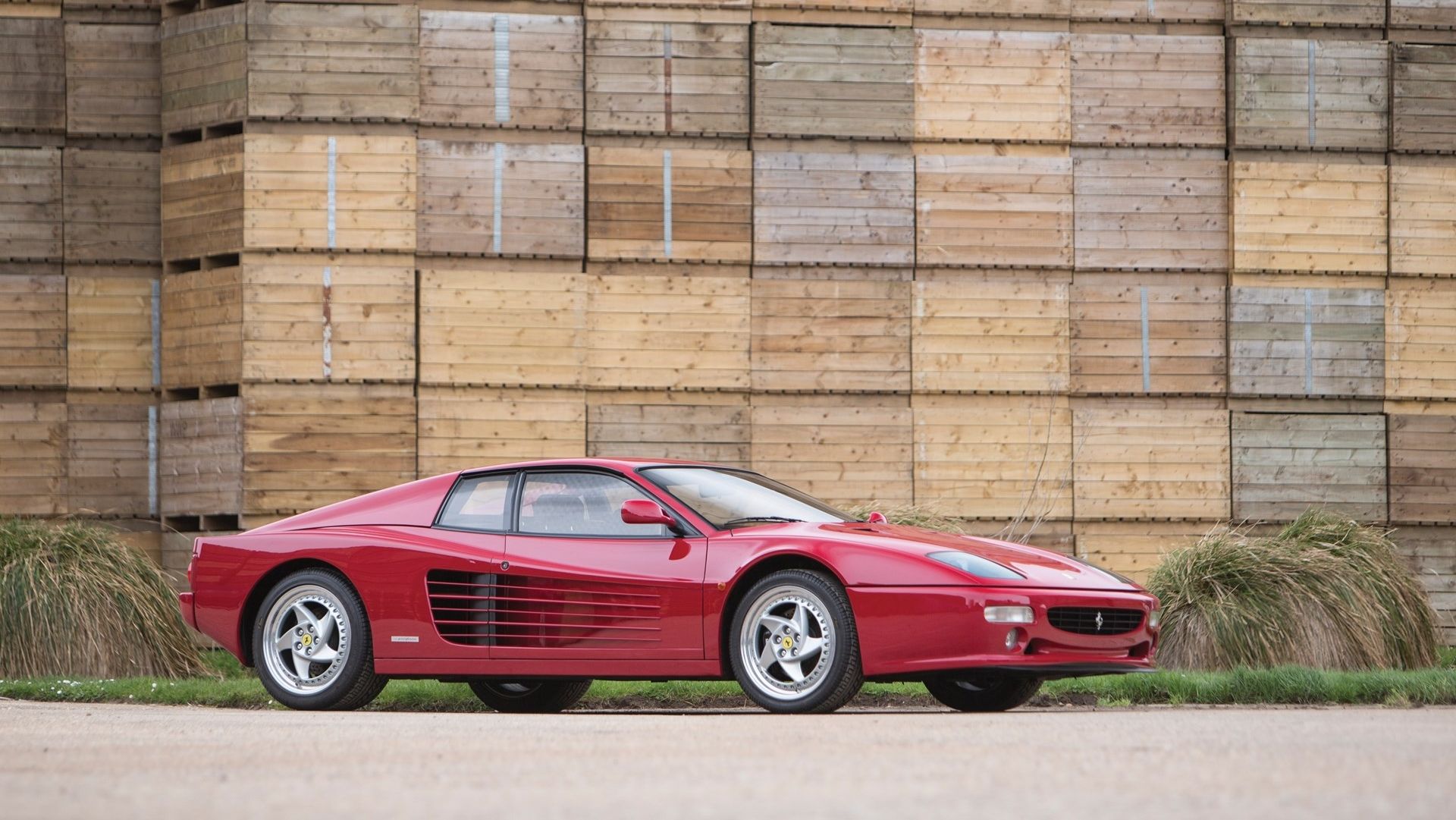The Ferrari F512 M was the last evolution of the Testarossa, unarguably one of the legendary cars of the ‘80s. The F512 M was lighter than its predecessor, featured more modern styling, and boasted improved handling characteristics.
Everyone knows the Testarossa. With its red cam covers, its long “cheese graters” on the sides, and angular design, it’s a staple of its time and one of Ferrari’s modern icons. At the time, it was every bit as fast as a Countach, if not slightly faster. It handled slightly better and, more importantly, was a more relaxed tourer in that you could actually drive the Testarossa for 500 miles at a time and not drop dead from back pain afterward.
The F512 TR continued the trend and refined the recipe, but the ultimate expression of this body shape came in 1994 and was christened F512 M, where M stands for “Modificato.” Indeed, there were many modifications done to the F512 M even in comparison to the F512 TR, but the same spirit was still there. It was to be the rarest of all the Testarossas since only 501 were built through 1996 when Ferrari rolled out the front-engined grand tourer called 550 Maranello.
1995 Ferrari F512 M
- Make: Array
- Model: 1995 Ferrari F512 M
- Engine/Motor: flat-12
- Horsepower: 440 @ 6750
- Torque: 370 @ 5500
- [do not use] Vehicle Model: Array
1995 Ferrari F512 M Exterior
The F512 M is truly a car born old.
Many of them were executed to the low-slung, yet boxy, body. There were also some minute changes inside and the engine got lighter in an attempt to make the whole car handle better in tune with newer supercars that arrived on the scene in the early-‘90s.
The front end is what changed the most in the transition from the F512 TR to the F512 M. For starters, the pop-up headlights were ditched in favor of some more traditional “homofocal” fixed ones enveloped in perspex. The designers at Pininfarina also slightly altered the shape of the front hood and two NACA ducts were added towards the windshield for better ventilation inside.
The bumper itself is also revised. First, the formerly large indicators are now way narrower, making room for circular fog lamps on either side. Also, the main air inlet gained a circular edge, and there are two more vents down below which fit inside a crease in the bodywork between the fog lamps. You can see the same design idea employed on the tip of the 550 Maranello that followed, but, there, the vents are moved outboard because of the much wider, grinning, mouth.
Not much has been changed to the sides. The longer-than-life louvers are still in place, it would’ve been rude for Pininfarina designers to remove them since they also serve a purpose, And the sloping line of the rear hood ends as abruptly as ever with the straight-cut rear end.
What’s new, however, sits inside the wheel arches.
Behind, the rectangular taillights are gone. Now, the louvers only extend as far as the rear grille before they’re interrupted by a set of round taillights on either side. It’s part of Ferrari’s unified design language, same for the smiling mouth up front, which can be seen on the 456 GT, the 355 and, later, on the 550 Maranello. The rear hood still features a hump on the middle towards the rear window and the large variety of strakes for cooling purposes.
The rear end looks a bit less like something that was drawn using exclusively a ruler but its still wide, extremely wide. The 512’s boxed hips grow wider from where the louvers start halfway on the doors. Indeed, the F512 M is 77.8 inches wide which is almost as much as modern F1 car’s width. Let that sink in for a moment.
This means that you will never feel like you’re driving a nimble car, but an imposing one and that’s something that the Testarossa had from the beginning all the way to the F512 M-badged end: bags of character.
1995 Ferrari F512 M - exterior dimensions
|
Length |
4,480 mm |
|
Width |
1,976 mm |
|
Height |
1,135 mm |
|
Wheelbase |
2,550 mm |
|
Front track |
1,532 mm |
|
Rear track |
1,644 mm |
|
Weight |
1,455 kg (dry) |
1995 Ferrari F512 M Interior
The interior of the F512 M looks spacious and so it should given that you have more headroom than inside a Countach and the 512 also has a longer wheelbase. And while I’ve said that you can take this car on longer journeys because of the comfortable seats, some of its original defects are still there. Motor Trend spoke best about the F512 M grandfathered flaws back in 1995 when they reviewed it.
“In the ergonomically dismissive way of late '70s low-volume sports cars, the packaging is poor; the square instrument binnacle looks like a home-built attachment (as does a box of secondary dials hanging from the fascia); the steeply raked windshield passes so close to your face that, when the pace quickens and breathing deepens, a patch of the glass constantly mists up; the pedals are so far offset to the right that, when operating the clutch, your left foot is in line with the steering column,” was Phillip Bingham’s take 23 years ago.
Now, however, as the F512 M has aged, we’ve fully acknowledged that it’s basically a decade-old design with traits from some even older cars so we won’t go in expecting things it will never offer. Instead, let’s look at what the car does offer.
CAR Magazine drove it from Italy all the way to Morocco to the edge of the desert. This was their take on driving it along European highways between Maranello and Malaga. "An F512M is great for a long-distance thrash like this. Keep your speeds sane (as you must in radar-riddled France), and it’s not even that noisy. Relax as you surf on that great wave of power, listen to the flat-12 and discover that the seats are surprisingly comfortable, even after a dozen hours." However, author Richard Bremmer admits that the steering, benefitting from largely no assistance, is heavy. Motor Trend also touched on this pointing out, as a redeeming benefit, that its highly responsive and it communicates everything back to you. Shifting through gears isn’t the easiest of jobs but it feels involving, and it even looks good thanks to that gated shifter which helps you not put it in the wrong gear, which would be unpleasant.
1995 Ferrari F512 M Drivetrain
The centerpiece, literally and figuratively, is the longitudinally-mounted 4.9-liter Tipo F113 G flat-12. It has a power output of 440-horsepower, 12 over the F512 TR, and develops 370 pound-feet of torque, 8 pound-feet more than the TR.
But, beyond the numbers, this engine just feels right. It’s an old-school design, originating in the Boxer F1 unit from the early-‘70s but, two decades down the line it’s become civil, pleasant, relaxed. "The rich and romantic will buy this car for the engine alone. The noise so deep and authoritative, the power delivery so smooth and sophisticated, the throttle pedal so precise and obedient, and the powerband so wide and willing, combine to create one of the greatest road-car engines ever made. The Italians have a phrase, pura e dura, which could have been coined for this car: pure and strong", is how Motor Trend put it.
But, the engine is also a bit of a mischief. With the 5-speed manual gearbox underneath, it still has a pretty high center of gravity, despite some repacking done on the previous F512 TR which were carried over and which improved the matter a little bit. This, coupled with the size of the engine, means that the F113 G has its own gravitational field so the back tends to slide out of line if you apply too much power too early and it’s hard to correct it if it gets too sideways, even if you know what you’re doing.
Ferrari tried to make the F512 M less of a land yacht supercar by cutting some excess weight, but it still feels heavy – I guess you can only change that by plucking another engine in the middle.
The car is sprung via uneven double wishbones front and rear while the unassisted steering features the standard rack and pinion setup. Ventilated discs are fitted to all four wheels and you get the help of the ABS on the F512 M. The engine is fed by a Bosch Motronic fuel injection unit.
1995 Ferrari F512 M - specifications
|
Type |
rear, longitudinal flat-12 |
|
Bore/stroke |
82 x 78 mm |
|
Unitary displacement |
411.92 cc |
|
Total displacement |
4943.04 cc |
|
Compression ratio |
10.4 : 1 |
|
Maximum power |
440 HP @ 6,750 RPM |
|
Power per liter |
89 hp/l |
|
Maximum torque |
370 LB-FT @ 5,500 RPM |
|
Valve actuation |
twin overhead camshafts per bank, four valves per cylinder |
|
Top speed |
315 KM/H (196 MPH) |
|
Acceleration 0-100 km/h |
4.7 sec |
|
0-400 m |
12.7 sec |
|
0-1000 m |
22.7 sec |
1995 Ferrari F512 M Pricing
The F512 M was only sold for one year in the U.S., during which time 75 cars were sold here. You could get your hands on the car in 1995 for today’s equivalence of $362,293. This was a lot of money back in the mid-‘90s which is why only 501 F512 Ms sold altogether.
The scarcity of the car saw its value soar in the past decade. As such, the example we see in these pictures, fitted in the rare tint of Rosso Barchetta, was appraised at anywhere between $500,000 and $600,000. You’d be hardpressed to find an F512 M sell for a dime less, your only chance being the not-plausible situation of stumbling upon a barn find.
1995 Ferrari F512 M Competition
Lamborghini Diablo
The Diablo came as the Countach’s replacement back in 1990. The design was altered, but it followed the same DNA. Originally, the Diablo came with a 5.7-liter V-12 with the gearbox mounted ahead of the engine. It produced 492-horsepower and 428 pound-feet of torque. With a top speed of 202 mph, it bettered the F512 M performance-wise in all areas although it was slightly heavier at 3,474 pounds.
The Diablo spawned a number of versions including the VT with its AWD system featuring a mid-mounted viscous differential. It debuted in 1993 and was more aggressive in the looks department with bigger air vents springing from its hips, extra air vents in the nose and other technical elements that soon found their way into the basic Diablo. Power steering came standard on the VT in 1993, the year it was also introduced for the basic Diablo.
The Lamborghini was a success and sold well, almost 3,000 examples being shipped from the Sant’Agata Bolognese plant. The base price for one back in the early-‘90s was $393,582 in today’s money, so more than an F512 M.
Read our full review on the 1990 - 2001 Lamborghini Diablo.
Vector M12
I could’ve picked either the Cizeta V16T or the Vector M12 as they were both closely related to the Diablo and, as such, a competitor of the F512 M. I went with the Vector because, to me, it’s somehow the odder of the two. Built while Vector was owned by Megatech, who also owned Lamborghini for a while, it nestles the V-12 engine from the Lamborghini which has just as much horsepower as on the basic Diablo. The Vector’s top speed was, however, slightly below that of the Diablo at 189 mph with a 0-62 mph time of 5 seconds.
Less than 15 production M12s were built, although Megatech intended the model to be mass-produced and more customer-friendly. The production cycle ended in 1999 when Vector could no longer pay for the Diablo engines. The M12 weighed 3,600 pounds due to the less high-tech construction and more lavish interior.
Read our full review on the 1996 Vector M12.
Final Thoughts
The F512 M stands as the swansong of a great car, the Testarossa. While it may not be a great car in itself, mainly thanks to the styling updates which aren’t crowd pleasers to say the least, it is a rare one. As there’s always a market for rare Ferraris, the F512 M continues to gain momentum on the used car market and we’ll probably see one sell for $1,000,000 in 10 years time.
What has to be said is that V-12 lost none of its brilliance under the hood of the F512 M, instead gaining some more. The car loves to chug the miles down the highway and not to target the fastest lap time on a race track. It was also the final V-12 mid-engine Ferrari until the Enzo was launched in 2003.
Further reading
Read our full review on the 1984 Ferrari Testarossa.
Read our full review on the 1991 Ferrari F512 TR.

